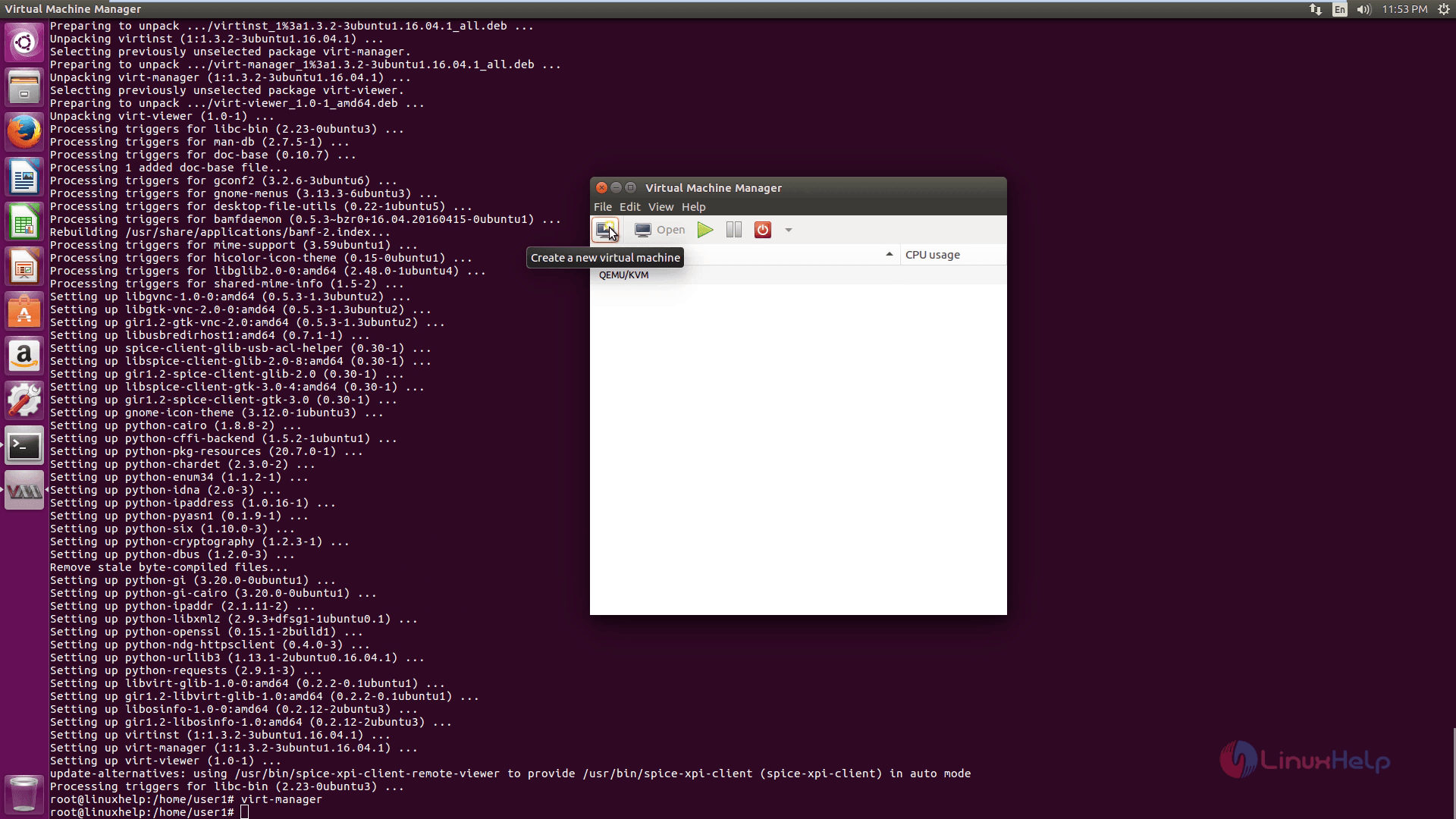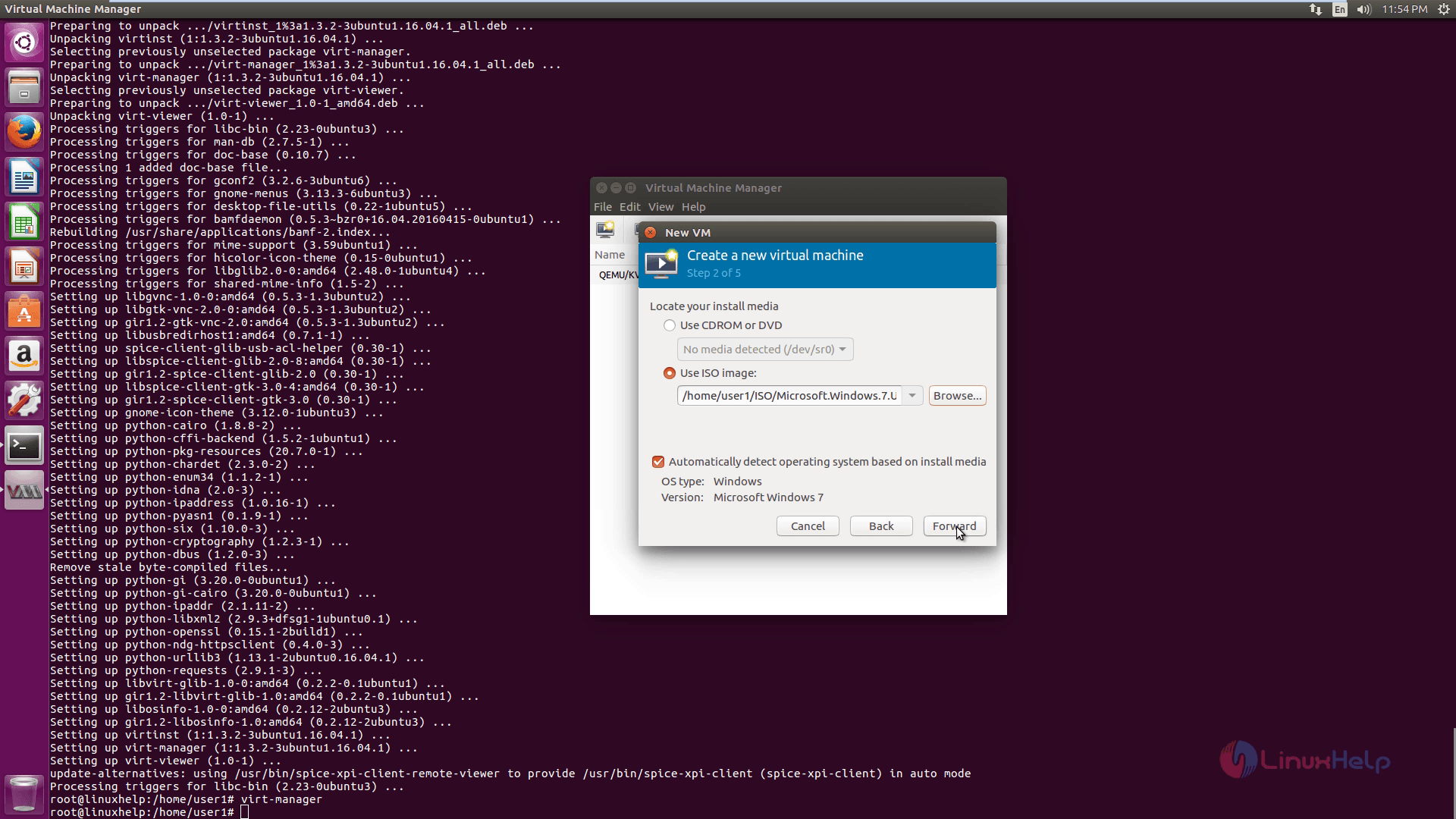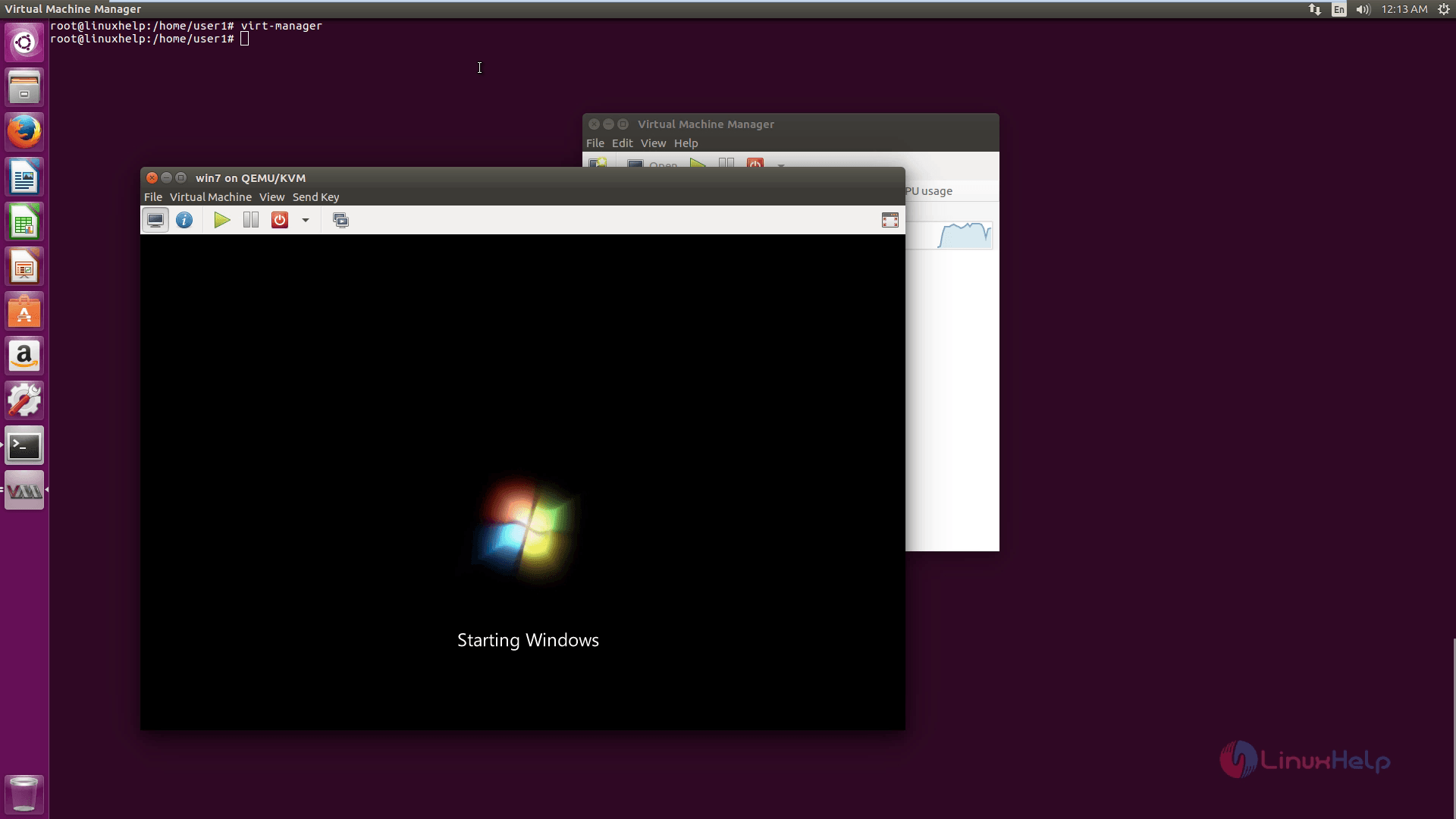How to install KVM - Virtualization extension in Ubuntu
To install KVM in Ubuntu 16.04
KVM is a virtualization extension for the Linux Kernel. It requires a processor with hardware virtualization support and can be tied up with any operating systems. Installation of KVM is explained in this manual.
To install KVM
Run the following command to install the dependency.
root@linuxhelp:/home/user1# apt-get install qemu-kvm libvirt-bin ubuntu-vm-builder bridge-utils
Reading package lists... Done
Building dependency tree
Reading state information... Done
...
...
Processing triggers for ureadahead (0.100.0-19) ...
Processing triggers for systemd (229-4ubuntu4) ...
Processing triggers for initramfs-tools (0.122ubuntu8) ...
update-initramfs: Generating /boot/initrd.img-4.4.0-31-generic
Append the user to the libvirtd group.
root@linuxhelp:/home/user1# adduser `id -un` libvirtd
Adding user `root' to group `libvirtd' ...
Adding user root to group libvirtd
Done.
Utilise the following command to install KVM.
root@linuxhelp:/home/user1# apt-get install virt-manager
Reading package lists... Done
Building dependency tree
Reading state information... Done
....
....
Setting up virt-manager (1:1.3.2-3ubuntu1.16.04.1) ...
Setting up virt-viewer (1.0-1) ...
update-alternatives: using /usr/bin/spice-xpi-client-remote-viewer to provide /usr/bin/spice-xpi-client (spice-xpi-client) in auto mode
Processing triggers for libc-bin (2.23-0ubuntu3) ...
To launch KVM
Run the following command to launch KVM.
root@linuxhelp:/home/user1# virt-manager

To Create a new VM
Select the installation type and click Forward.

Select the location of your media and click forward.

Choose your Memory and CPU settings

Select a location for the Storage of the VM

Enter the name for your VM and select a network. Then finally click Finish.

Now Power on the VM.


Comments ( 0 )
No comments available